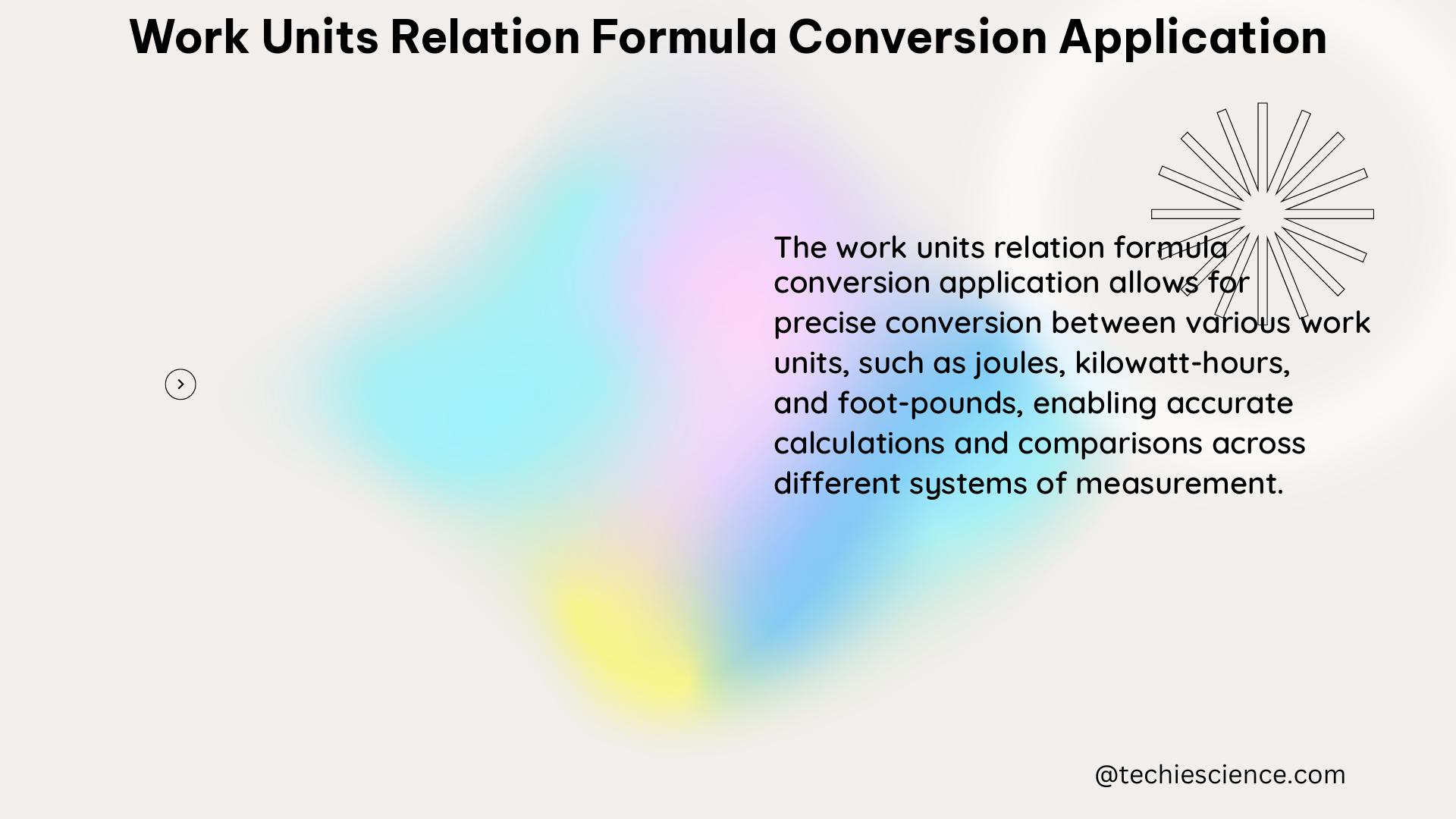Work units relation formula conversion application is a critical aspect of business operations, particularly in the calculation of unit economics. Unit economics are the direct revenues and costs of a particular business measured on a per-unit basis, where a unit can be any quantifiable item that brings value to the business. Calculating unit economics makes it easier to forecast things such as break-even points and gross margins.
Understanding the Key Metrics
The key metrics involved in calculating unit economics include:
1. Lifetime Value (LTV)
Lifetime Value (LTV) is the average amount of money that a business earns per customer over the lifetime of their relationship. In the context of Software as a Service (SaaS), LTV is the amount of money a business makes from the time a customer signs up until the time they cancel and do not return.
The formula for calculating LTV is:
LTV = (Average Revenue per User) x (Average Lifetime in Months)
For example, if a SaaS business has an Average Revenue per User of $50 and an Average Lifetime of 24 months, the LTV would be:
LTV = $50 x 24 = $1,200
2. Customer Acquisition Cost (CAC)
Customer Acquisition Cost (CAC) is the total amount of money a business spends on sales and marketing to acquire one customer. If a business spends too little, they may not acquire enough new customers. If they spend too much, they may not generate enough profit. The right amount to spend on CAC is directly tied to the business’s LTV.
The formula for calculating CAC is:
CAC = Total Sales and Marketing Expenses / Number of New Customers Acquired
For example, if a business spends $100,000 on sales and marketing and acquires 500 new customers, the CAC would be:
CAC = $100,000 / 500 = $200
3. Churn Rate
Churn rate is the percentage of customers that cancel their subscription during a given period. It is a crucial metric for SaaS businesses, as it directly impacts the long-term growth and profitability of the business.
The formula for calculating churn rate is:
Churn Rate = Number of Customers Lost / Total Number of Customers
For example, if a SaaS business has 1,000 customers and loses 50 customers in a given month, the churn rate would be:
Churn Rate = 50 / 1,000 = 0.05 or 5%
4. Retention Rate (R)
Retention rate is the opposite of churn rate. It is the percentage of customers that remain subscribed during a given period.
The formula for calculating retention rate is:
Retention Rate = 1 - Churn Rate
For example, if a SaaS business has a churn rate of 5%, the retention rate would be:
Retention Rate = 1 - 0.05 = 0.95 or 95%
5. Average Customer Lifetime (ACL)
Average Customer Lifetime (ACL) is the average amount of time a customer stays subscribed before they churn. It is a key component in calculating their lifetime value.
The formula for calculating ACL is:
ACL = 1 / Churn Rate
For example, if a SaaS business has a churn rate of 5%, the ACL would be:
ACL = 1 / 0.05 = 20 months
6. Number of Customers (C)
This is the total number of customers subscribed to a service during a given period.
7. Number of Transactions (T)
Not every customer is billed at the same frequency. This metric covers the actual number of transactions that have been made during the period and may not equal the number of customers.
8. Total Revenue (TR)
This is the total amount of money a business has made from its customers over the course of a given period.
9. Gross Profit (GP)
Gross Profit is a business’s total revenue minus its cost of sales.
10. Average Order Value (AOV)
Average Order Value (AOV) is the average amount of money each customer spends per transaction.
Tracking Key Performance Indicators (KPIs)

In addition to the unit economics metrics, businesses may also track various Key Performance Indicators (KPIs) to gauge their performance against a set of targets, objectives, or industry peers. KPIs can be process-oriented, marketing-focused, IT-focused, sales-focused, or human resource-focused, depending on the specific needs and goals of the business.
When measuring KPIs, businesses typically use business analytics software and reporting tools to track and analyze their data. A good KPI provides objective and clear information on progress toward an end goal, tracks and measures factors such as efficiency, quality, timeliness, and performance, and helps management make more informed decisions.
Practical Applications and Examples
To illustrate the practical application of work units relation formula conversion, let’s consider a hypothetical SaaS business that offers a project management software solution.
Suppose the business has the following unit economics metrics:
– Average Revenue per User (ARPU): $50 per month
– Average Lifetime in Months: 24 months
– Total Sales and Marketing Expenses: $100,000
– Number of New Customers Acquired: 500
– Total Number of Customers: 1,000
– Number of Customers Lost: 50
– Total Revenue: $600,000
– Cost of Sales: $300,000
Using the formulas provided earlier, we can calculate the following:
-
Lifetime Value (LTV):
LTV = $50 x 24 = $1,200 -
Customer Acquisition Cost (CAC):
CAC = $100,000 / 500 = $200 -
Churn Rate:
Churn Rate = 50 / 1,000 = 0.05 or 5% -
Retention Rate (R):
Retention Rate = 1 - 0.05 = 0.95 or 95% -
Average Customer Lifetime (ACL):
ACL = 1 / 0.05 = 20 months -
Gross Profit (GP):
GP = $600,000 - $300,000 = $300,000 -
Average Order Value (AOV):
AOV = $600,000 / (1,000 x 12) = $50 per month
By analyzing these metrics, the SaaS business can make informed decisions about their operations, marketing strategies, and overall business performance. For example, they can use the LTV and CAC metrics to determine the optimal amount to spend on customer acquisition, or the churn rate and retention rate to identify areas for improvement in customer satisfaction and loyalty.
Conclusion
Work units relation formula conversion application is a critical aspect of business operations, enabling the calculation of unit economics and the tracking of key performance indicators. By understanding and utilizing these metrics, businesses can make more informed decisions, optimize their operations, and increase profitability.
References
- Indeed.com – Success Metrics
- Paddle.com – Unit Economics
- Investopedia – Key Performance Indicator (KPI)

Hello, I’m Manish Naik completed my MSc Physics with Solid-State Electronics as a specialization. I have three years of experience in Article Writing on Physics subject. Writing, which aimed to provide accurate information to all readers, from beginners and experts.
In my leisure time, I love to spend my time in nature or visiting historical places.
Looking forward to connecting you through LinkedIn –